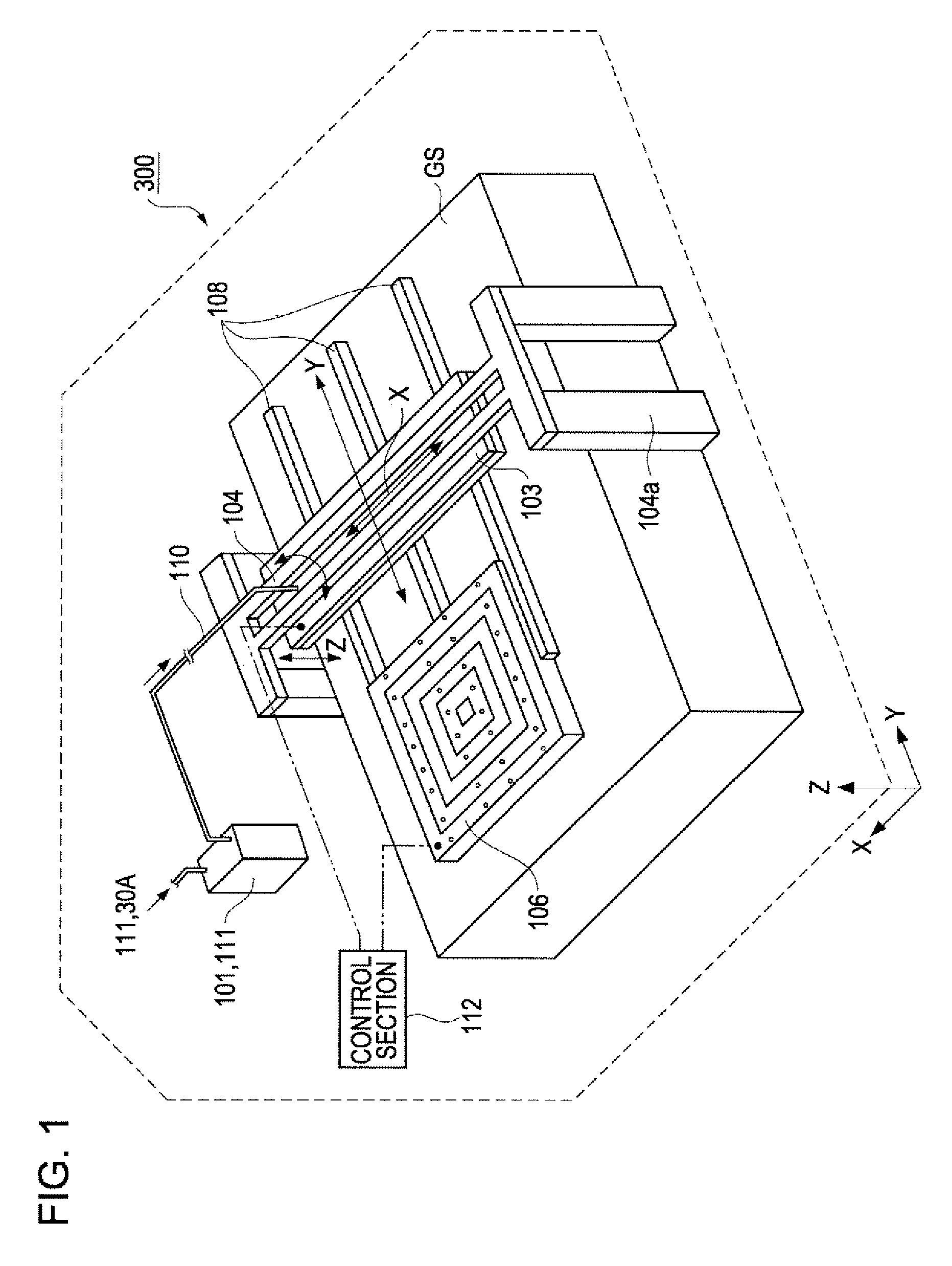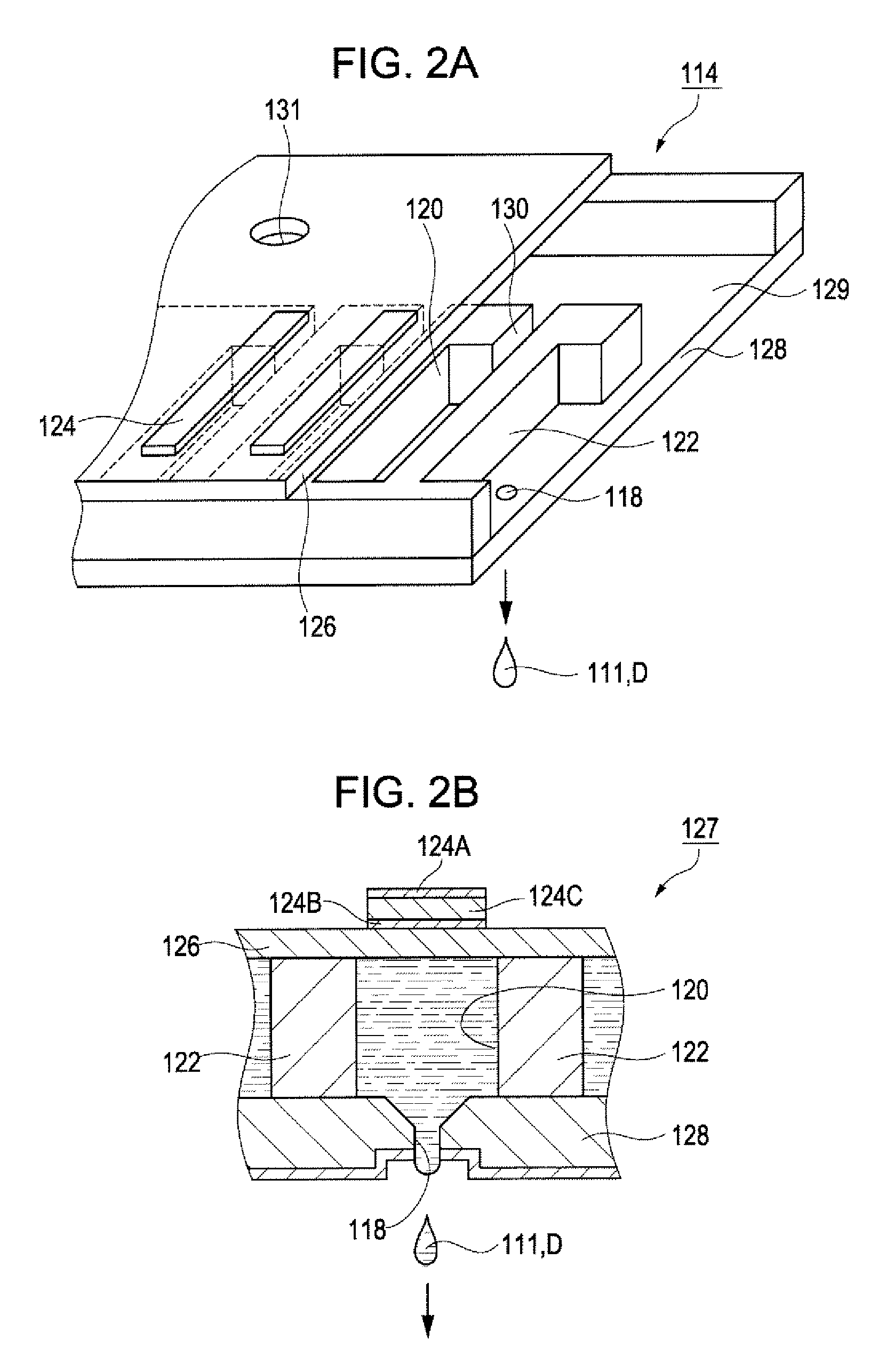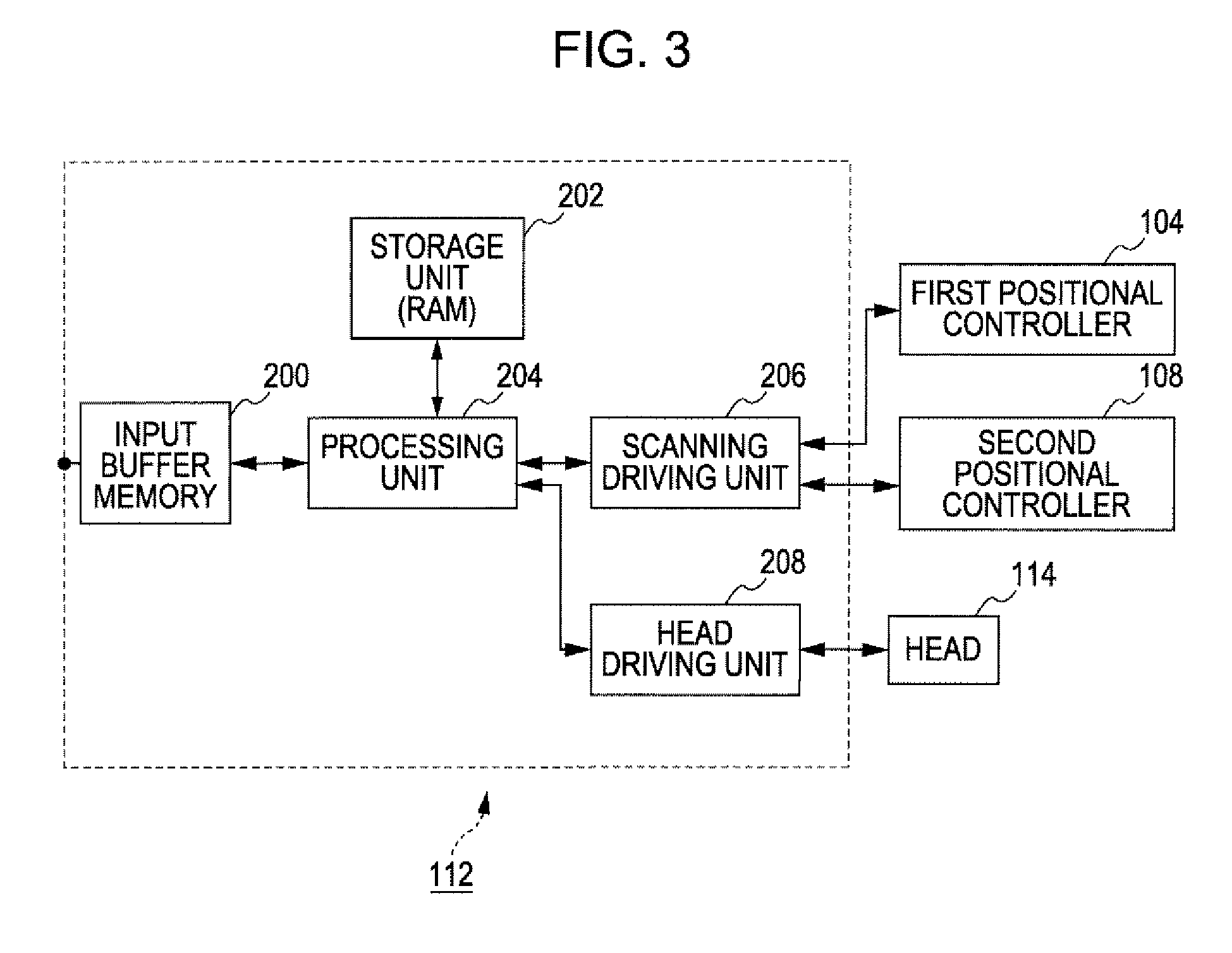Color filter substrate, method of manufacturing color filter substrate, electro-optical device, and electronic apparatus
a technology of color filter substrate and color filter substrate, which is applied in the field of color filter substrate, method of manufacturing color filter substrate, electrooptical device, and electronic apparatus, can solve the problems of large absorption of display light by color filter substrate, inability to recognize visual structure in pixels of color filter substrate (specifically, the boundary between the first resin and the second resin), and achieves less light absorption, improved reflectance in the reflective region, and higher luminance
- Summary
- Abstract
- Description
- Claims
- Application Information
AI Technical Summary
Benefits of technology
Problems solved by technology
Method used
Image
Examples
first embodiment
A. Color Filter Substrate
[0040]FIG. 4B is a plan view of a color filter substrate 1 manufactured using a method of manufacturing a color filter substrate according to the invention. The color filter substrate 1 has a base member 10 including a glass substrate 11, and a red coloring element 31R disposed on the base member 10, a green coloring element 31G, and a blue coloring element 31B (refer to FIG. 4A).
[0041] The color filter substrate 1 has a plurality of regions 19 which are vertically and horizontally disposed in a matrix and which are corresponding to pixels, respectively, of a liquid crystal display device 400 (refer to FIG. 14). The drawing in which, while paying attention to one of the regions 19, a portion of the one region is enlarged is FIG. 4A. As can be seen from this drawing, each region 19 includes a large number of red pixels 20R, green pixel 20G, and blue pixel 20B, and these pixels are regularly arranged repeatedly in this order (in the following, the pixels 20...
second embodiment
[0089] In the above first embodiment, in the pixel 20, although the transparent resin 30 and the coloring element 31R (31G, 31B) are disposed in different regions and are not overlapped with each other, these can also be disposed to overlap each other. Hereinafter, a color filter substrate 2 of this embodiment will be described referring to FIGS. 8 to 10.
[0090]FIG. 8A is an enlarged plan view showing the pixels 20 of the color filter substrate 2, and the sectional side view taken along the A-A line in this drawing is FIG. 10C. As shown in these drawings, in the pixel 20R, the coloring element 32R covers the transparent resin 30 disposed in a portion of the surface of the reflecting film 12, and the coloring element 31R is formed over the whole pixel 20R in a state in which it covers the coloring element 32R.
[0091] According to the above configuration, since all the light that is incident from the back side, is transmitted through the transmissive region, and is emitted to the obse...
third embodiment
[0104] As one of the embodiments of the invention, there is a color filter substrate in which two kinds of coloring elements whose hues are almost the same and whose pigment densities are different from each other are disposed in every pixel. In the following, a method of manufacturing a color filter substrate 3 will be described, referring to FIGS. 11 and 12.
[0105]FIG. 11A is an enlarged plan view showing the pixels 20 of the color filter substrate 3, and the sectional side view taken along the C-C line in this drawing is FIG. 12C. As shown in these drawings, in the pixel 20R, the coloring element 31R is disposed in the reflective region, and the coloring element 33R is disposed in the transmissive region. Here, the coloring element 31R and the coloring element 33R has the same hue (red), and has a pigment density higher than the coloring element 31R. Accordingly, the light that has been transmitted through the coloring element 31R becomes light which is relatively deep red and re...
PUM
| Property | Measurement | Unit |
|---|---|---|
| diameter | aaaaa | aaaaa |
| volume | aaaaa | aaaaa |
| volume | aaaaa | aaaaa |
Abstract
Description
Claims
Application Information
 Login to View More
Login to View More - R&D
- Intellectual Property
- Life Sciences
- Materials
- Tech Scout
- Unparalleled Data Quality
- Higher Quality Content
- 60% Fewer Hallucinations
Browse by: Latest US Patents, China's latest patents, Technical Efficacy Thesaurus, Application Domain, Technology Topic, Popular Technical Reports.
© 2025 PatSnap. All rights reserved.Legal|Privacy policy|Modern Slavery Act Transparency Statement|Sitemap|About US| Contact US: help@patsnap.com



